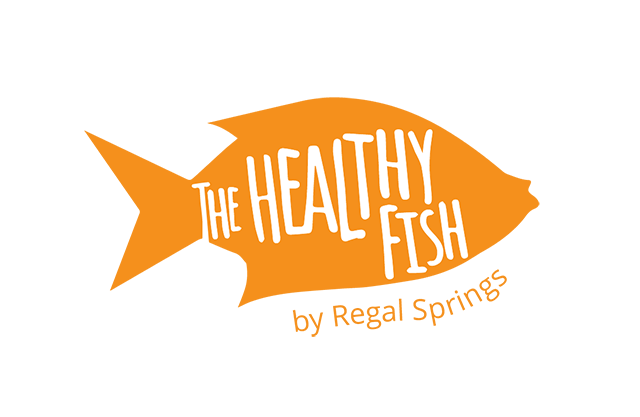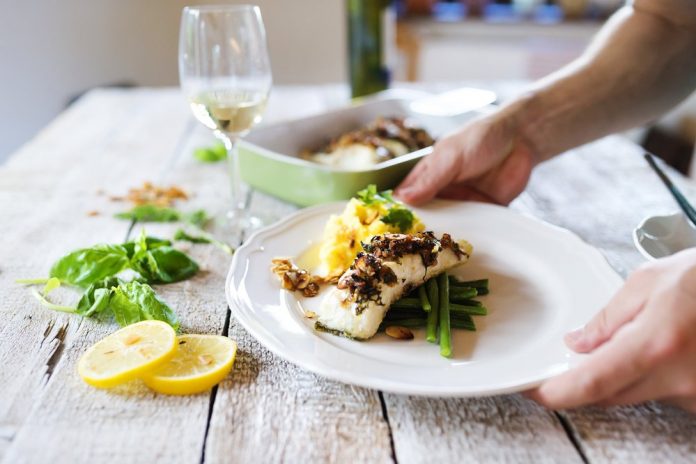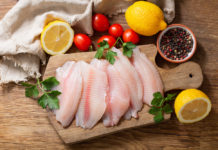Are you looking for some alternatives to red meat? If so, you’re not alone. In recent years World Health Organization researchers have linked red meat consumption to increased risk of cardiovascular disease, diabetes and some cancers. It also can be costly, and has a large environmental impact.
But reducing meat consumption while still meeting your caloric, protein needs and nutritional needs can be challenging if you’re just starting out. Here are some great alternatives to red meat that provide a healthy way to get the nutrients you need.
Eggs

Eggs are an excellent, low-cost source of protein and very versatile to prepare. At just 70 calories, one large egg provides 6 grams of protein and all nine essential amino acids, as well as 50% of your daily recommended vitamin B12. While fantastic fried, scrambled or poached, don’t overlook eggs as an entree. Frittatas, quiches, stratas and soufflés—or just hardboiled and added to salad—are all great ways to showcase this heart-healthy food.
Try our scrambled egg and veggie breakfast quesadillas.
Fish
Fish is rich in protein and also provides Omega-3 fatty acids, which contribute to heart health. The American Heart Association and the FDA both recommend eating at least two 6-ounce servings per week. Stick to low-mercury varieties such as Tilapia, Arctic cod, wild salmon and sole. It’s still okay to eat higher mercury varieties such as tuna, sea bass and orange roughy—just don’t have them as often, and avoid serving them to children or pregnant women. As a protein source, fish is comparable with meat, and it has fewer calories.
Try this coconut fish curry and more gluten-free recipes everyone will enjoy.
Tempeh and Tofu

Made from fermented soybeans, tempeh is another protein-rich meat substitute. It also has the benefit of being high in B vitamins, calcium and amino acids. With a meaty texture and rich flavor, it provides a hearty meat replacement in stir fries, tacos and kabobs. It’s also very low in sodium.
Tofu or bean curd is also a versatile option. Its neutral taste allows it to pick up flavor from sauces and seasoning, and its texture can vary from smooth and soft to crunchy, depending on the cooking method. At the store, you’ll see several varieties. Choose extra firm tofu for baking, grilling and stir fry recipes. Soft tofu is preferable for salad dressings, sauces and smoothies.
Check out this simple tofu stew and more recipes everyone should know how to make.
Pulses

Pulses such as beans, peas, lentils and chickpeas are an outstanding vegan source of protein. They also possess a high amount of soluble fiber which can help lower cholesterol levels, and they are rich in iron, zinc and phosphorous. Beans are easy on the budget, particularly if you buy in bulk and soak your own rather than purchasing the canned variety.
Some of our favorites are black beans, kidney beans, cannellini beans, garbanzo beans and French lentils. Chili and soup recipes are the easiest places to incorporate beans. They’re also great in salads, where they pair well with whole grains such as quinoa or bulgur wheat.
Get your bean intake by trying this Tilapia with Mango Salsa, and more tropical recipes.
Whether you are looking at reducing your red meat consumption to once or twice a month, or eliminating it completely, you’ll find there are many creative options to help you meet your protein needs.
Ready to get more sustainable protein in your diet? Check out these sources of healthy protein and tips for buying protein, and upgrade your meal planning with this lean protein challenge!
Photo credits: Halfpoint / Shutterstock, Inc., Hisu Lee / Unsplash, Jun Yang / Pixabay, Ela Haney / Pexels






